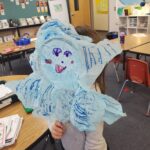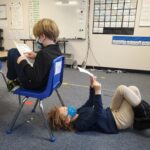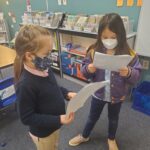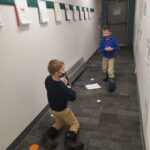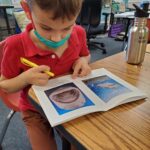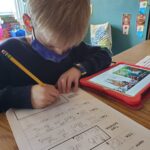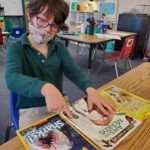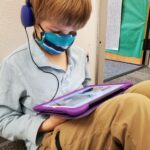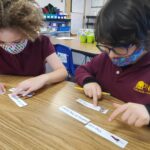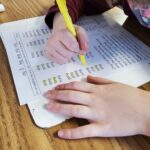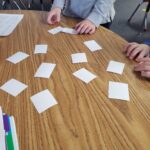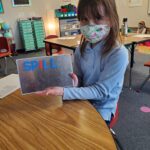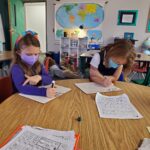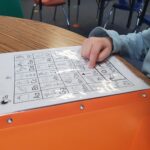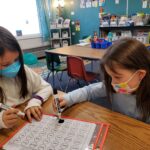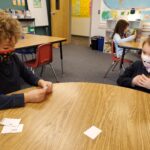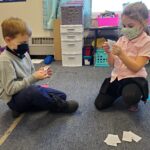“Action!”
First graders, this week, practiced and performed winter-themed mini-plays with the purpose being to “enhance students’ reading skills and confidence by having them practice reading with a purpose” (Bafile, 2021).
First grade is a big year for reading, a year that a child’s reading skills can really take off, and sometimes, when beginning signs of dyslexia are observed. In first grade, students are provided activities that activate and make connections between the regions of the brain associated with reading. Students are also given opportunities that show them how exciting reading can be, which helps them find a purpose for reading, whether that be because they enjoy entertaining their classmates through a play, are researching a topic, or just because they enjoy the adventure a book can take them on.
In the first grade classroom, you can see students working on their phonemic awareness daily – hearing, breaking apart, and building new words with different sounds – while also reviewing sounds from the sound wall to help them see and hear how a sound is made with their mouth. Students also meet in small groups or one-on-one with the teacher to work on specific sounds and fluency skills they need. At this time, students also review old and new sounds through the Brain Friendly Reading Program. This program includes activities such as sound tapping, arm spelling, and reading games that get the child to see, touch, say, and hear the reading sounds, which helps readers (high, struggling, and those with dyslexia), develop and strengthen neural pathways, or connections, between the three parts of the brain that are associated with reading (seeing, hearing, and meaning).
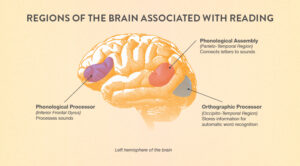
Meanwhile, students participate in daily reading rotations, where they are given choices. They read an assigned leveled text and respond to comprehension questions, read a book of choice, visit reading apps on the iPad, research a topic for a writing assignment or project, cut and sort out sounds, or play reading games like Connect Four, Memory, or Reading Go Fish with a classmate. These activities are valuable because students are: learning how to manage their time, reading texts and completing comprehension work at their level, exploring different reading tools, getting support from their peers, and having fun reading!
PNA students have the advantage of learning at their level and doing hands-on activities, which makes learning fun and relevant and is especially important in reading. This helps students activate and connect the parts of the brain necessary for reading, gives all readers the opportunity to be successful, and maintains their interest in reading. For these first-grade readers, whether it be through a game of Reading Tic-Tac-Toe or a play that they perform to their peers, they are discovering what they enjoy about reading and what they are capable of doing with this powerful skill.
Bafile, C. (2021, September 9). Reader’s Theater: Giving students a reason to read aloud. Reading Rockets. Retrieved January 22, 2022, from https://www.readingrockets.org/article/reader-s-theater-giving-students-reason-read-aloud#:~:text=Reader’s%20theater%20is%20a%20strategy,real%20reason%20to%20read%20aloud
Brain friendly reading – reading, education, spelling. (n.d.). Retrieved January 22, 2022, from https://brainfriendlyreading.org/
The science of reading: Evidence for a new era of instruction. The Science of Reading: Evidence for a New Era of Instruction. (n.d.). Retrieved January 23, 2022, from https://www.zaner-bloser.com/research/the-science-of-reading-evidence-for-a-new-era-of-reading-instruction.php
Tools 4 reading – educational materials. tools4reading. (n.d.). Retrieved January 22, 2022, from https://www.tools4reading.com/

